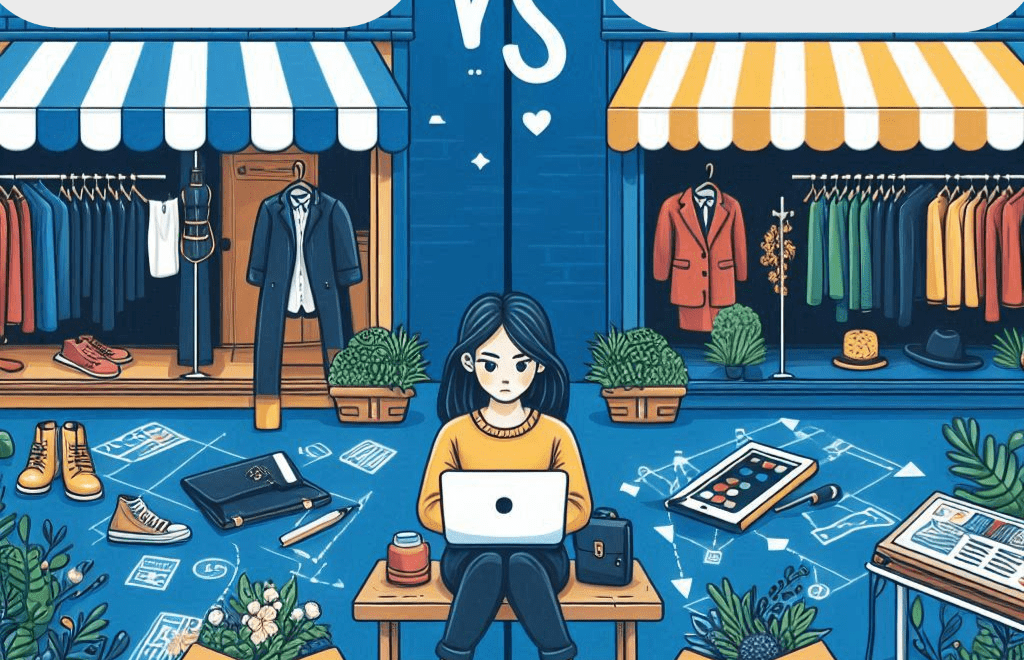Launching a startup in the high-end fashion space is always an exciting journey. When your garments are priced above INR 10,000, the stakes are higher, and so are the expectations from your target audience. For such a niche, customized product, startups often face a critical question: should they focus more on retail store sales/marketing or online sales/marketing?
In this blog, we’ll explore both avenues, backed by data, real-life examples, and an analysis of where a luxury startup should invest its time band resources to yield the best results.
1. Understanding the Market for High-End Fashion in India
India’s luxury market is expected to grow at a CAGR of 10% over the next decade, with apparel and accessories contributing significantly to this growth. As of 2023, India’s luxury goods market is valued at around INR 8,700 crore, with high-end apparel making up a large chunk of this value.
However, India’s high-net-worth individuals (HNWIs) still prefer a tactile shopping experience—touching, feeling, and trying on the product before purchasing. This is an important factor to consider when you’re selling customized garments priced above INR 10,000.
2. The Case for Retail Store Sales/Marketing
Tactile Shopping Experience
One of the strongest arguments in favor of retail store sales is the tactile experience. High-end customized garments often involve premium fabrics, intricate detailing, and precise tailoring. Your customers—who are likely to be part of the affluent class—want to experience the quality firsthand. A retail store allows them to:
- 1. Touch and feel the fabric
- 2. Try on the garment to see how it fits
- 3. Consult with stylists in person to customize their look
Personalized Customer Service
The retail space also allows you to provide personalized services. In-store stylists, tailoring experts, and one-on-one consultations can greatly enhance the customer experience, leading to better satisfaction and higher sales conversions.
**Real-Life Example: Sabyasachi Mukherjee
Sabyasachi is one of India’s leading high-end fashion designers, known for his luxury bridal wear priced well over INR 10,000. Despite having a robust online presence, Sabyasachi continues to rely on physical stores. His flagship stores in cities like Mumbai and Kolkata offer a luxurious shopping experience, and most of his high-net-worth clientele prefer shopping in-store. His personalized service, coupled with the rich ambiance of his stores, has built a brand that thrives on exclusivity.
Brand Positioning & Exclusivity
Having a physical retail store adds to the perception of exclusivity. When customers walk into a high-end store, they are not just shopping for clothes—they are buying into a brand experience. For luxury brands, store ambiance, location, and customer service become key differentiators.
Higher Average Order Value (AOV)
Interestingly, physical retail stores often see higher AOVs compared to online channels. According to a study by Bain & Company, customers spend 30% more on in-store luxury purchases than online because of the immersive experience. For a startup selling garments above INR 10,000, this can translate into significant revenue boosts.
Challenges
- 1. High setup costs: Renting prime retail space in metro cities like Mumbai or Delhi can cost upwards of INR 1 lakh per month for a small boutique. Not to mention the cost of interior design, staffing, and inventory management.
- 2. Limited scalability: While a store can serve local customers, its reach is limited to the geographical area.
3. The Case for Online Sales/Marketing
Wider Audience Reach
E-commerce has been the game-changer for many startups. India’s online fashion market is projected to grow by CAGR 19% between 2023 and 2028. With over 150 million online shoppers, focusing on online sales can open up your high-end fashion brand to a global audience.
Online platforms allow you to:
- 1. Reach a broader audience across India, and even internationally
- 2. Offer a wider variety of customization options without the limitations of physical space
- 3. Leverage digital marketing tools (social media, SEO, PPC) to target affluent customers
Real-Life Example: Pernia’s Pop-Up Shop
Pernia’s Pop-Up Shop is a well-known online platform that offers high-end Indian designer wear, often priced above INR 10,000. Despite its e-commerce nature, Pernia’s has successfully built a brand where customers are willing to buy expensive, customized outfits online. By offering detailed product descriptions, virtual styling sessions, and an easy return policy, Pernia’s has made the online luxury shopping experience seamless and trustworthy.
Lower Operational Costs
Unlike physical retail, running an online business has much lower operational costs. You don’t need to invest in rent, decor, or sales staff. Your primary investment would be in digital marketing, website management, and logistics.
According to research, an online store can operate at 50-60% less cost than a brick-and-mortar one. This is particularly beneficial for startups with limited budgets.
Data-Driven Personalization
The biggest strength of online sales is data-driven marketing. With the right tools, you can track customer behavior, preferences, and buying patterns. This enables you to offer personalized recommendations through email campaigns, retargeting ads, and dynamic product suggestions, further driving sales.
Challenges
- 1. Lack of tactile experience: Luxury customers may hesitate to purchase expensive, customized products online without the chance to see or try them first.
- 2. Higher return rates: In the fashion industry, online sales often come with higher return rates, as customers may not be satisfied with the fit or look of the garment upon arrival.
4. Which Route Should a High-End Startup Choose?
Balanced Approach: Phygital Model
Given the pros and cons of both models, a phygital (physical + digital) approach may be the best route for a high-end startup brand. This combines the strengths of physical retail stores and online sales, offering a seamless experience for your customers.
Data to Consider:
- 1. Omni-channel shoppers tend to spend 30% more than single-channel shoppers, according to Harvard Business Review.
- 2. In India, luxury brands that operate both physical stores and an online presence see 20-30% higher overall sales than those with only one channel.
By offering a luxurious in-store experience for customers who prefer to shop physically while also running a robust online marketing and sales platform, your brand can attract a broader audience and maximize revenue opportunities.
5. Conclusion:
For a startup selling high-end, customized garments priced above INR 10,000, the decision between focusing on retail store sales/marketing and online sales/marketing comes down to understanding your target audience’s preferences and balancing the costs.
- 1. If you can afford to invest in a high-end retail space, providing an in-person, tactile shopping experience could be invaluable for building brand loyalty and exclusivity.
- 2. However, in today’s digital age, neglecting online sales could mean missing out on a significant portion of the market.
Ultimately, a phygital strategy is the way forward, allowing your brand to leverage the best of both worlds. With luxury customers seeking personalization, exclusivity, and convenience, your high-end fashion startup can flourish with the right balance of retail and online presence.



Leave a Comment